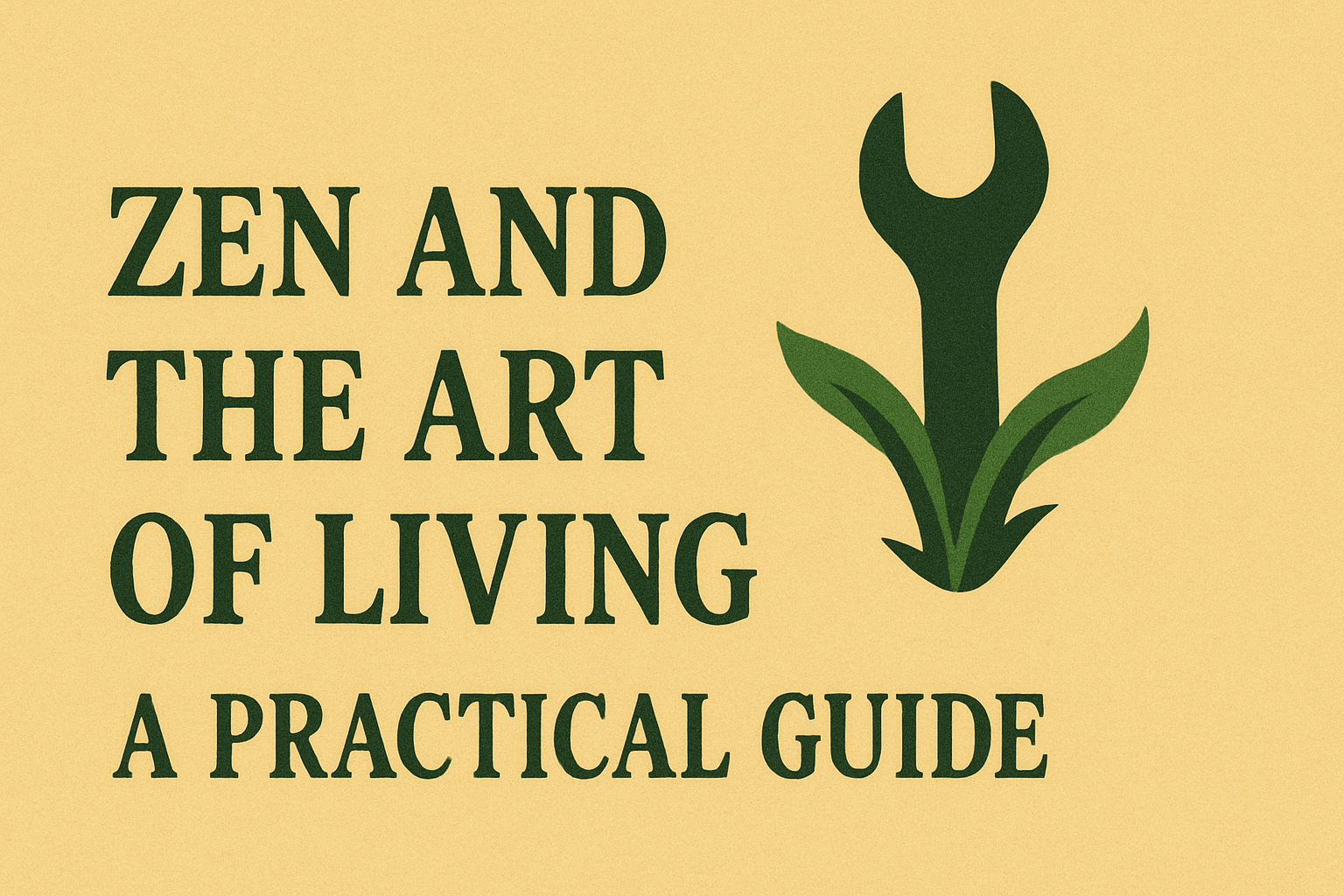A practical guide to integrating the Metaphysics of Quality into daily living, drawing from Zen practices and Pirsig’s philosophical insights.
Robert M. Pirsig’s Metaphysics of Quality (MOQ), introduced in his seminal works Zen and the Art of Motorcycle Maintenance and Lila: An Inquiry into Morals, provides a unique philosophical framework that emphasizes the pursuit of quality as the essence of a fulfilling life. Drawing from Zen practices and Pirsig’s philosophical insights, this practical guide explores how to integrate the Metaphysics of Quality into daily living, fostering a life of balance, mindfulness, and excellence.
Understanding the Metaphysics of Quality
Pirsig’s Metaphysics of Quality posits that quality is the primary reality, an intrinsic value that underlies all experiences. This concept transcends the traditional subject-object dichotomy, suggesting that quality is both the cause and effect of a meaningful life. Integrating the MOQ into daily living involves recognizing and cultivating quality in every aspect of life, from mundane tasks to profound experiences.
Incorporating Zen Practices
Zen Buddhism, with its focus on mindfulness, simplicity, and presence, complements Pirsig’s philosophy. Here are some Zen practices that can help integrate the Metaphysics of Quality into daily living:
- Mindfulness: Being fully present in the moment is a cornerstone of Zen practice. Mindfulness involves paying attention to your thoughts, feelings, and surroundings without judgment. Practicing mindfulness helps you appreciate the quality of each moment and make more conscious choices.
- Practice: Set aside a few minutes each day to practice mindfulness meditation. Sit quietly, focus on your breath, and observe your thoughts without getting attached to them. Over time, try to bring this mindful awareness to your daily activities.
- Simplicity: Zen teaches the value of simplicity and decluttering, both physically and mentally. Simplifying your life can help you focus on what truly matters and enhance the quality of your experiences.
- Practice: Start by decluttering your living space, removing unnecessary items that don’t contribute to your well-being. Simplify your schedule by prioritizing activities that bring joy and fulfillment.
- Gratitude: Cultivating gratitude aligns with the Zen practice of appreciating the present moment. Acknowledging the good in your life enhances your sense of quality and satisfaction.
- Practice: Keep a gratitude journal, writing down three things you are grateful for each day. Reflect on these entries regularly to deepen your appreciation for life’s blessings.
Applying the Metaphysics of Quality in Daily Life
Integrating the Metaphysics of Quality into daily living involves recognizing and enhancing quality in various aspects of life. Here are practical ways to apply Pirsig’s insights:
- Quality in Work: Approach your work with a focus on quality, whether it’s a professional task, household chore, or creative project. Strive for excellence and take pride in your efforts.
- Practice: Identify areas in your work where you can improve quality. Set specific goals for enhancing your skills and performance. Celebrate small achievements and learn from challenges.
- Quality in Relationships: Cultivate quality in your interactions with others by being present, empathetic, and respectful. Strong, meaningful relationships contribute significantly to a fulfilling life.
- Practice: Practice active listening when engaging with others. Show genuine interest and empathy, and be fully present in your conversations. Regularly express appreciation and support to your loved ones.
- Quality in Personal Growth: Pursue personal growth with a commitment to quality. This involves setting meaningful goals, seeking continuous improvement, and embracing lifelong learning.
- Practice: Set personal development goals that align with your values and passions. Dedicate time each day to activities that foster growth, such as reading, learning new skills, or practicing a hobby.
- Quality in Health and Well-being: Prioritize your physical and mental health by adopting quality practices in self-care, nutrition, and exercise.
- Practice: Develop a balanced routine that includes regular exercise, healthy eating, and sufficient rest. Practice mindfulness or meditation to support your mental well-being.
- Quality in Leisure and Recreation: Engage in leisure activities that bring joy and relaxation, enhancing the quality of your free time.
- Practice: Choose hobbies and recreational activities that you are passionate about. Invest time in these pursuits regularly, allowing yourself to fully enjoy and immerse in the experience.
Balancing Static and Dynamic Quality
Pirsig’s distinction between static and dynamic quality provides a framework for balancing stability and innovation in life. Here’s how to apply this balance:
- Static Quality: Embrace routines and practices that provide stability and structure. These include daily habits, traditions, and established skills that contribute to a sense of order and reliability.
- Practice: Establish a daily routine that includes time for work, self-care, and leisure. Maintain traditions that bring joy and continuity to your life, such as family rituals or community activities.
- Dynamic Quality: Foster creativity and adaptability by embracing new experiences, learning, and innovation. Dynamic quality brings excitement and growth to life.
- Practice: Regularly challenge yourself to step out of your comfort zone. Try new activities, learn new skills, and seek opportunities for personal and professional growth. Be open to change and innovation.
Conclusion
Integrating the Metaphysics of Quality into daily living, with the support of Zen practices, offers a pathway to a balanced, fulfilling, and meaningful life. By focusing on quality in work, relationships, personal growth, health, and leisure, you can enhance your overall well-being and satisfaction. Embracing both static and dynamic quality ensures a harmonious balance between stability and innovation, allowing you to navigate life’s challenges and opportunities with grace and mindfulness. As you cultivate quality in every aspect of your life, you’ll discover a deeper sense of purpose and joy, embodying the true essence of Zen and the art of living.
